Digital vs Non-Digital, Pros and Cons

The choice between digital and non-digital documents depends on the specific needs of a company and its operational requirements. Both formats have advantages and disadvantages, it is important to know them in order to make the right choices for your specific needs.
Digital DocumentsPROS
- Accessibility: Digital documents can be easily accessed from any location using internet-connected devices.
- Search and Indexing: Digital documents can be easily searched and indexed, making it quicker to locate specific information.
- Sharing and Collaboration: Sharing digital documents is easy and can be collaborative in real time, facilitating teamwork.
- Space saving:there is no need for physical spaces to store documents.
- Process Automation: Digital documents can be integrated with automated systems, improving operational efficiency.
Digital DocumentsCONS
- Safety: Digital documents can be vulnerable to cyber attacks and require robust security measures.
- Technology addiction: Accessing digital documents requires devices and an Internet connection, and technical issues may interrupt access.
- Initial costs: Implementing digital solutions can involve significant upfront costs, such as purchasing software and hardware.
- Technological obsolescence: Technology changes rapidly, and digital formats can become obsolete over time, requiring conversions or upgrades.
Non-Digital Documents PROS
- Reliability: Paper documents are not dependent on technological devices and are not subject to cybersecurity issues.
- Instant access: They do not require energy or an Internet connection to be consulted.
- Intuitiveness: Some people prefer the tactile feel of paper documents and find it easier to read on paper.
- Ease of long-term storage: Paper documents can last a long time if stored properly.
Non-Digital Documents CONS
- Physical space: Storing paper documents requires physical space, which can be a problem in companies with large volumes of documents.
- Difficulty sharing and collaborating: Sharing paper documents can be slower and less efficient than sharing digital documents.
- Environmental risks: Paper documents can be damaged by fire, flood or other environmental events.
- Long-term operating costs: Managing and archiving paper documents can lead to long-term operating costs with particular emphasis on efficient storage and transportation.
In all those cases for which a complete digital transition is not yet possible, it may be useful to adopt a hybrid solution that integrates digital and paper documents, this is advantageous because it allows you to exploit the peculiarities of both formats in an optimal way.
The digitalization of documents, for example, makes information management and accessibility more efficient, allowing for rapid data retrieval, immediate sharing, and improved security through backups and digital protection systems. At the same time, keeping paper copies can be essential for legal needs, where specific regulations require a physical archive, or for business needs that require traditional consultation.
In contesti in cui la conservazione a lungo termine è cruciale, i documenti cartacei possono fornire una maggiore affidabilità rispetto ai supporti digitali, soggetti a potenziali obsolescenze tecnologiche o perdite accidentali di dati, sebbene le più comuni soluzioni in cloud permettano di superare agevolmente questo genere di rischi.
Questa combinazione permette di bilanciare efficienza e conformità, offrendo all’azienda la possibilità di accedere agilmente alle informazioni, assicurando al contempo che i requisiti legali e operativi siano rispettati. Una gestione ibrida dei documenti, dunque, unisce i benefici della digitalizzazione con la solidità del supporto fisico, configurandosi come un sistema versatile e completo per l’azienda soggetta a normative stringenti e non aggiornate in termini di conservazione delle informazioni

